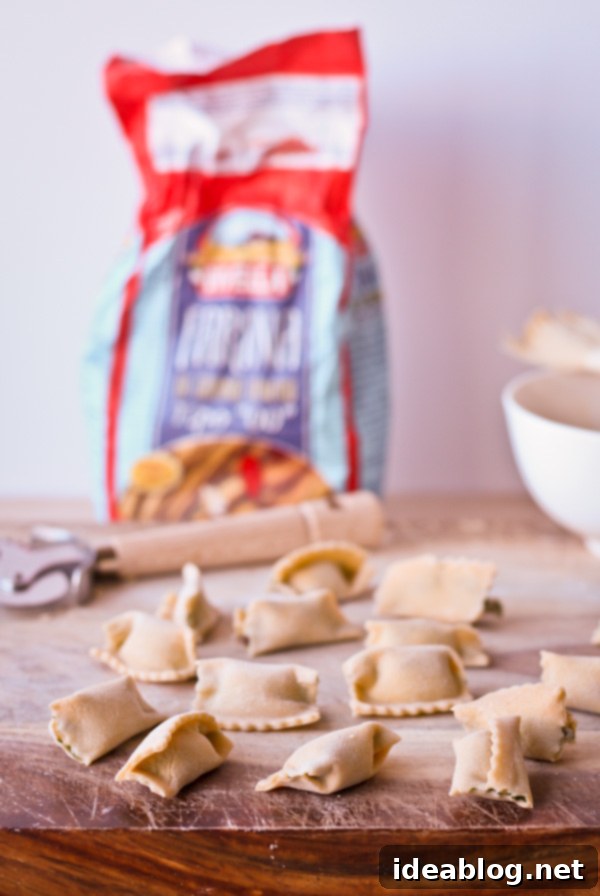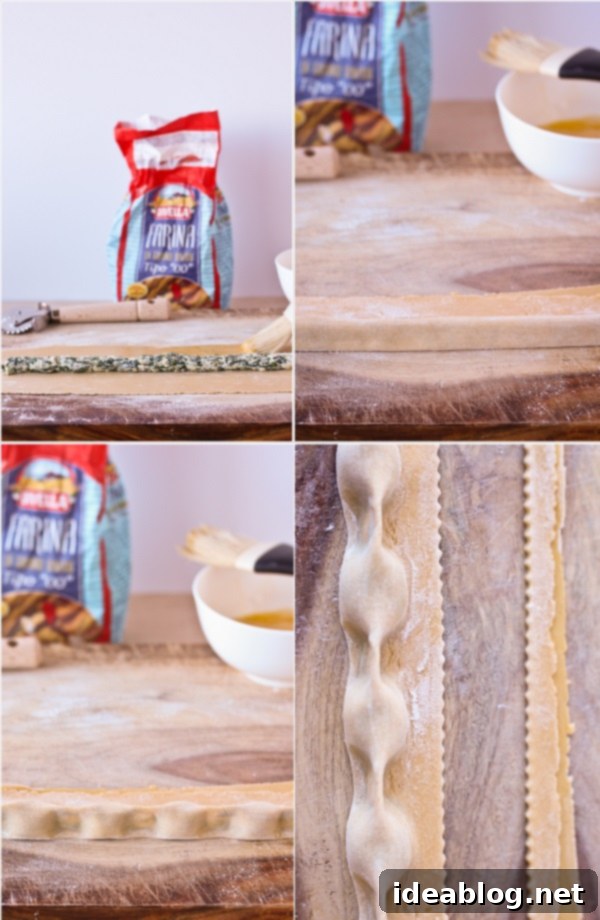Homemade Agnolotti Pasta: Your Ultimate Guide to Crafting Delicious Stuffed Pasta with Ricotta, Swiss Chard, and Prosciutto
Embark on a delightful culinary journey and discover the art of making homemade agnolotti pasta. This comprehensive guide provides step-by-step instructions, complete with visual aids, to help you create these exquisite stuffed pasta parcels right in your kitchen. While we offer a fantastic recipe for a rich ricotta, Swiss chard, and prosciutto filling, feel free to unleash your creativity and choose a filling that perfectly suits your taste!
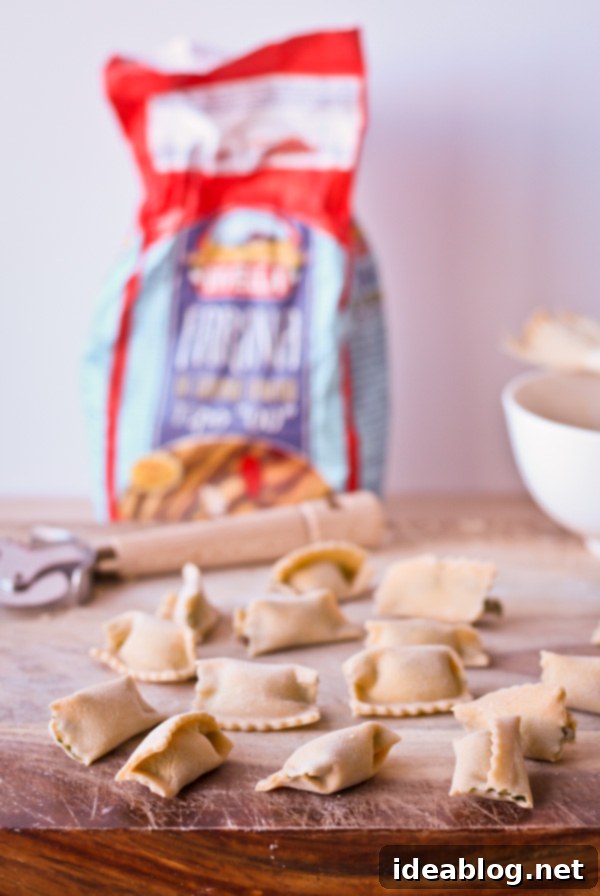
There’s an undeniable magic in homemade pasta. From the moment you mix the flour and eggs to the final bite of a perfectly cooked strand, the experience is incredibly rewarding. While the process of crafting agnolotti might seem a bit intricate at first glance, requiring a touch of patience and practice, it’s truly a labor of love that yields magnificent results. Think of it as a wonderful project for a leisurely weekend, a chance to slow down, engage your hands, and create something truly special. Don’t let the detailed steps deter you; the journey is as enjoyable as the destination.
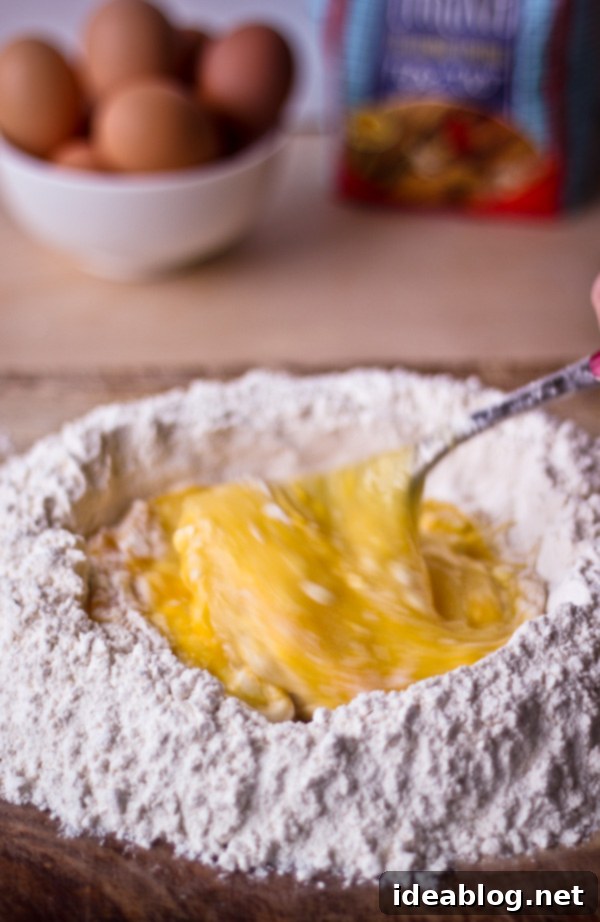
The Therapeutic Art of Pasta Making
There’s something uniquely therapeutic about kneading pasta dough – or any dough, for that matter, be it for bread or pizza. The rhythmic, repetitive motion allows your mind to wander and relax, offering a welcome respite from the high-concentration demands of other cooking tasks. It’s a meditative act, connecting you to generations of home cooks who have perfected this ancient craft. As you work the dough, feeling it transform from a shaggy mass into a smooth, elastic masterpiece, you’ll find a sense of calm and accomplishment. This hands-on process is not just about making food; it’s about finding joy in creation.
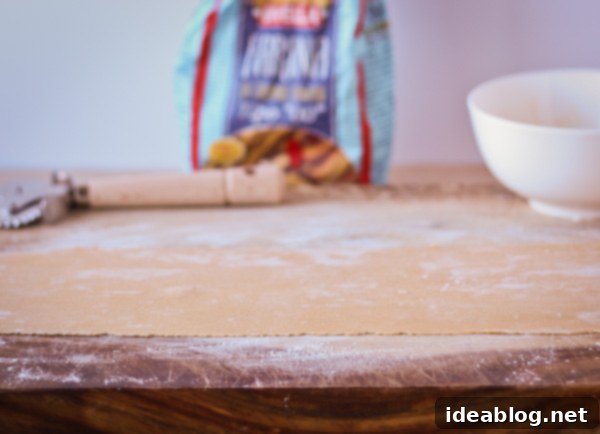
What is Agnolotti? A Glimpse into Italian Culinary Tradition
I’ve long harbored a desire to share the secrets of homemade agnolotti, and finally, the time has come. Agnolotti is a classic Italian stuffed pasta, hailing primarily from the Piedmont region. It shares similarities with its more famous cousin, ravioli, but boasts a distinct shape and often a slightly richer filling. The name “agnolotti” itself is sometimes said to translate to “priest’s hat,” a playful nod to its traditional, somewhat folded-over appearance.
Unlike the often square or round ravioli, agnolotti are typically small, pinched pasta pockets, creating a delicate parcel that beautifully cradles its savory filling. If there’s anything more delightful than fresh pasta, it’s undoubtedly stuffed pasta. The combination of tender, toothsome dough and a flavorful, unexpected center creates an experience that is truly a cut above. It’s a dish that speaks volumes about Italian culinary heritage and the joy of simple, quality ingredients transformed with care.
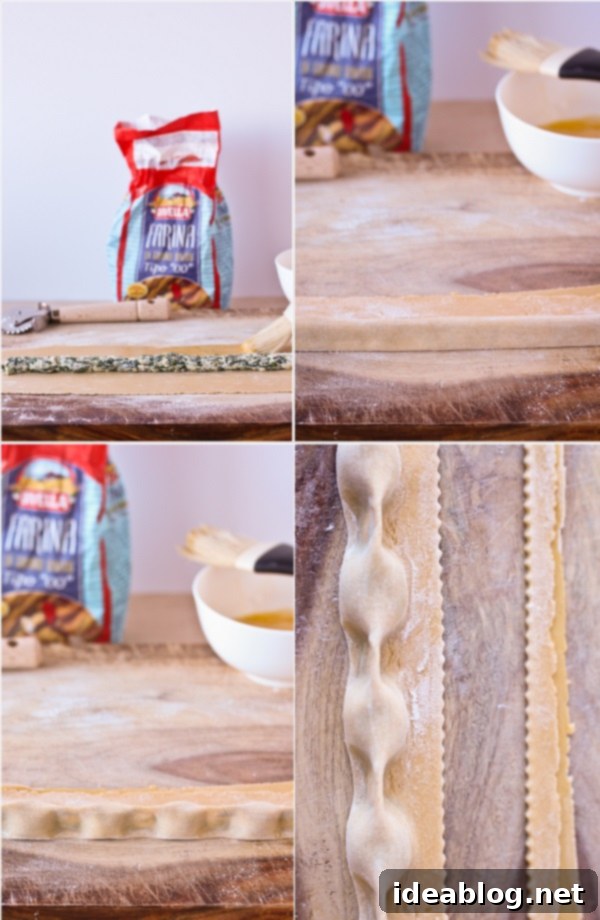
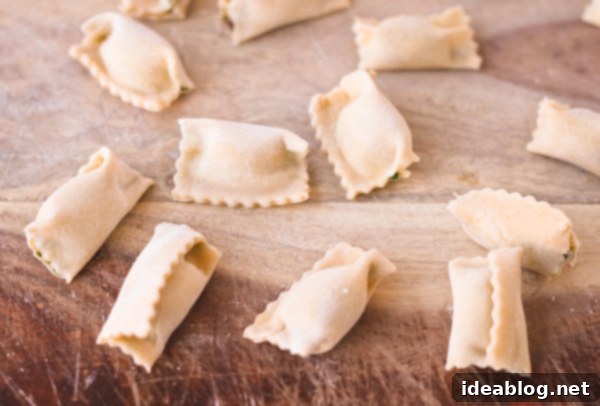
My Journey to Mastering Agnolotti
My initial foray into making these exquisite pasta shapes happened during my time working in a bustling restaurant kitchen. I spent a period on the “pasta station,” a role that involved preparing almost every pasta dish that left the kitchen. It was, at times, exhilaratingly terrifying – the pressure was immense – but I wouldn’t trade the experience for anything. Working so closely with one of my all-time favorite foods allowed me to gain invaluable skills and a deep appreciation for the craft of pasta making. It was here that I learned the nuances of dough consistency, the finesse required for shaping, and the importance of a perfectly balanced filling.
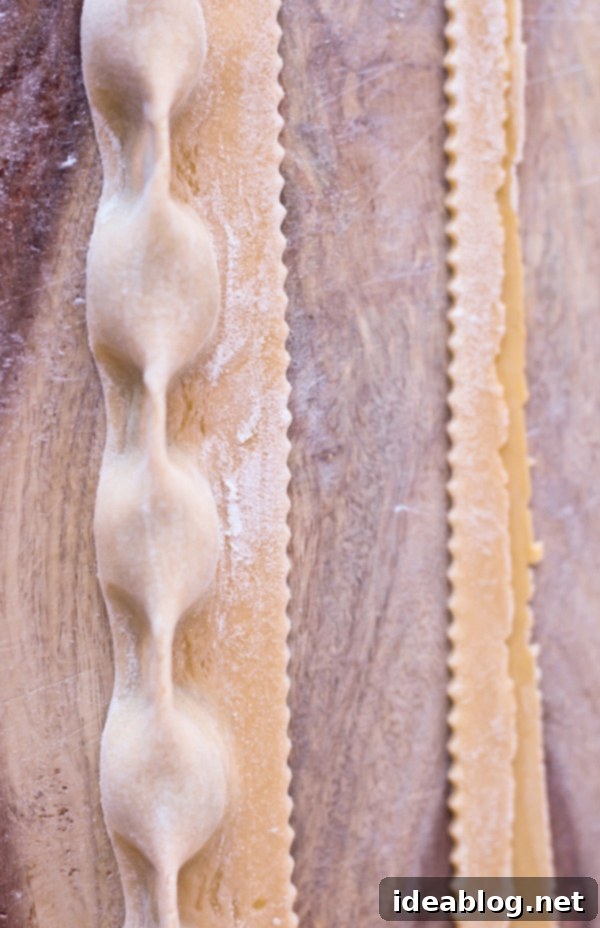
The Versatility of Fillings: Our Recommended Delight
One of the most captivating aspects of stuffed pasta is the endless array of possible fillings. The beauty lies in customization – you can literally fill them with anything your heart desires! For this particular recipe, I chose to stuff these delicious parcels with a vibrant Swiss chard, creamy ricotta, and savory prosciutto mixture. This specific combination, adapted with slight modifications from the renowned culinary expert Marcella Hazan, delivers a harmonious blend of earthy greens, rich cheese, and salty cured ham. The depth of flavor in this filling is truly exceptional, making it a perfect complement to the delicate pasta dough. Below, you’ll find the detailed recipe for this exquisite filling, but please feel empowered to experiment with your own favorite ingredients or other classic Italian combinations. Whether you opt for a simple cheese blend, a hearty meat ragu, or a seasonal vegetable medley, the possibilities are only limited by your imagination.
Essential Tips for Homemade Pasta Success
Choosing Your Flour:
For the best results, “Type 00” flour is highly recommended. This finely milled Italian flour creates a silky, tender pasta with a fantastic chew. If “00” flour isn’t readily available, unbleached all-purpose flour can be a suitable substitute, though the texture might be slightly different. The key is to start with high-quality ingredients, as they form the foundation of your delicious agnolotti.
Kneading the Dough:
Proper kneading is crucial for developing the gluten in the dough, which gives pasta its characteristic elasticity. Don’t be shy – put some muscle into it! Aim for at least 10 minutes of continuous kneading until your dough is smooth, supple, and springs back when lightly pressed. This stage is where the magic happens, transforming simple ingredients into a workable, beautiful dough.
Resting the Dough:
Once kneaded, the dough needs to rest. This allows the gluten to relax, making the dough much easier to roll and shape. A minimum of 30-45 minutes at room temperature, wrapped tightly in plastic wrap, is essential. Skipping this step will result in tough, difficult-to-work-with dough.
Rolling the Pasta Sheets:
Whether you use an electric pasta machine or a manual one, the goal is to roll the dough as thinly as possible – almost translucent. Thin pasta cooks quickly and allows the filling to shine. Work in small batches to prevent the dough from drying out too quickly, which can make sealing difficult. Dusting with semolina flour is also helpful to prevent sticking.
Sealing the Agnolotti:
A tight seal is paramount to prevent your delicious filling from escaping into the boiling water. The egg wash acts as a glue. After piping the filling, carefully fold the dough over and press firmly around the filling to remove any air bubbles. Then, use your fingertips to create distinct indentations between each agnolotti, ensuring a secure closure before cutting. Speed can be your friend here, as it helps the dough adhere before it has a chance to dry.
Storage and Freezing:
Homemade agnolotti can be prepared in advance. They can be stored in the refrigerator overnight, covered, or frozen on a semolina-dusted baking sheet until solid. Once frozen, transfer them to a freezer-safe bag for longer storage. This makes them a fantastic make-ahead meal, perfect for busy weeknights or entertaining.
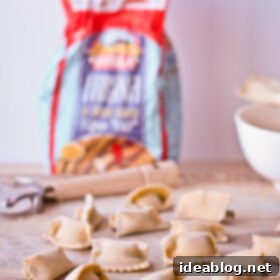
Homemade Agnolotti Pasta with Ricotta, Swiss Chard & Prosciutto
Pin
Review
SaveSaved!
Equipment
-
OXO Silicone Pastry Brush
-
Pasta Machine (manual or electric)
-
Pastry Cutter (preferably fluted)
-
Piping Bag with small round tip
-
Large Baking Sheets
Ingredients
For the Homemade Pasta Dough:
- 3½ cups (420 g) Type “00” flour or unbleached all-purpose flour for a slightly different texture
- 5 large eggs
For the Swiss Chard, Ricotta, and Prosciutto Filling:
- 1 lb Swiss chard stems removed and leaves roughly chopped
- 1½ tablespoons (22 g) unsalted butter
- ¼ cup finely chopped shallot about 1 medium shallot
- 3 tablespoons finely chopped prosciutto about 2 to 3 slices, for best flavor
- 1 large egg yolk
- 1 cup whole-fat ricotta cheese
- ¼ cup grated Parmigiano-Reggiano cheese
- ¼ teaspoon freshly grated nutmeg
- freshly ground black pepper to taste
- kosher salt to taste
For Assembly:
- semolina flour for dusting surfaces and finished pasta
- 1 large egg, beaten for brushing pasta sheets (egg wash)
Instructions
-
Prepare Pasta Dough: On a clean countertop or large cutting board, place the flour and create a large well in its center, ensuring the countertop is visible. Crack the eggs directly into this well. Using a fork, gradually incorporate the flour from the sides of the well into the egg mixture, whisking continuously until the mixture is no longer runny.
-
With lightly floured hands or a bench scraper, continue to fold and incorporate the remaining flour into the egg mixture. Knead the pasta dough for a full 10 minutes, or until it becomes exceptionally smooth, elastic, and no longer sticky when squeezed.
-
Divide the dough in half. Flatten each piece into a disk using your palm, wrap them tightly in plastic wrap, and let them rest at room temperature for at least 30 to 45 minutes. This resting period is crucial for the dough’s elasticity.
-
Prepare Filling: Thoroughly rinse the torn Swiss chard leaves in a colander to remove any grit; do not dry them. Bring a large pot of salted water to a boil, add the Swiss chard leaves, and blanch for 3 to 4 minutes until they are tender. Drain the chard well and allow it to cool until it can be handled comfortably. Place the blanched chard in a clean kitchen towel or thick paper towels, and wring out all excess liquid. Finely chop the chard and set aside.
-
In a medium saucepan, melt the butter over medium heat. Add the finely chopped shallots and sauté until they become soft and translucent, which should take about 3 to 4 minutes. Stir in the finely chopped prosciutto and continue to cook for an additional 2 to 3 minutes, then add the chopped, blanched Swiss chard to the pan. Sauté the green mixture for another 3 to 4 minutes before removing it from the heat. Allow the mixture to cool until it is lukewarm.
-
In a mixing bowl, combine the whole-fat ricotta cheese, egg yolk, the lukewarm Swiss chard and prosciutto mixture, freshly grated nutmeg, and grated Parmigiano-Reggiano cheese. Mix thoroughly until all ingredients are well combined. Season the mixture to taste with salt and freshly ground black pepper. Transfer this rich filling to a large piping bag fitted with a small round tip, preparing it for assembly.
-
Assemble Agnolotti: Once the pasta dough has rested, briefly knead it again, adding a little more flour if necessary. The dough may absorb some moisture during resting, so extra flour ensures it’s not overly sticky. Divide each dough disk in half again. Using an electric or manual pasta machine, roll one of the dough portions through the largest-width setting.
-
Fold the rolled dough into an envelope shape by bringing one edge into the center and then repeating with the other side. Continue to roll the dough at the largest-width setting, feeding the dough into the machine so the seams face the machine. Repeat this process at least five times until the dough is very smooth and rolls out evenly without tearing.
-
Now, gradually roll the pasta dough through the machine, decreasing the thickness setting with each pass, until you reach setting “5” on your pasta machine, or until the dough is very thin and almost translucent. Cut the long sheets of pasta into manageable 12-inch long sections. Allow the rolled dough to dry slightly at room temperature, perhaps by hanging it on a rack, until it is no longer tacky. To prevent the dough from becoming too dry and brittle, avoid rolling too many pasta sheets at once, assembling the agnolotti promptly after rolling each sheet.
-
Take one sheet of pasta at a time and place it on a lightly dusted countertop (use semolina flour). Pipe the ricotta filling in a thin, straight line (approximately ½-inch in diameter) horizontally across the center of the pasta sheet. Gently brush the dough adjacent to the filling, on both sides, with the beaten egg wash. Carefully fold one side of the dough over the filling, pressing gently but firmly to remove any air bubbles around the filling and to create a secure seal. Using a fluted wheel pastry cutter, cut the filled pasta strip away from the rest of the sheet, leaving a ½ to ¾-inch edge. Discard the pasta trimmings (or save them to cook separately).

-
Using your fingertips, gently indent the filled pasta strip into equal-sized sections, roughly 1-inch wide, creating a firm seal between each future agnolotti. With your hands, gently roll the dough over to the edge to create the characteristic agnolotti shape, and then, using your pastry cutter, quickly cut between each sealed section to form individual agnolotti. Perform this step swiftly to ensure a strong seal. Place the freshly assembled agnolotti on a large baking sheet generously dusted with semolina flour to prevent sticking.
-
Repeat the rolling, filling, and shaping process with the remaining pasta sheets until all agnolotti have been assembled. At this point, the fresh pasta can be stored in the fridge overnight, cooked immediately for instant gratification, or frozen on the semolina-dusted sheet tray until solid before being transferred to a ziploc bag for longer storage.
-
To cook your agnolotti, bring a large pot of generously salted water to a rolling boil. Carefully add the agnolotti and cook until they are al dente – tender with a slight bite, usually just a few minutes for fresh pasta. Serve immediately with your favorite sauce, a simple butter and sage sauce, or a drizzle of good quality olive oil.
